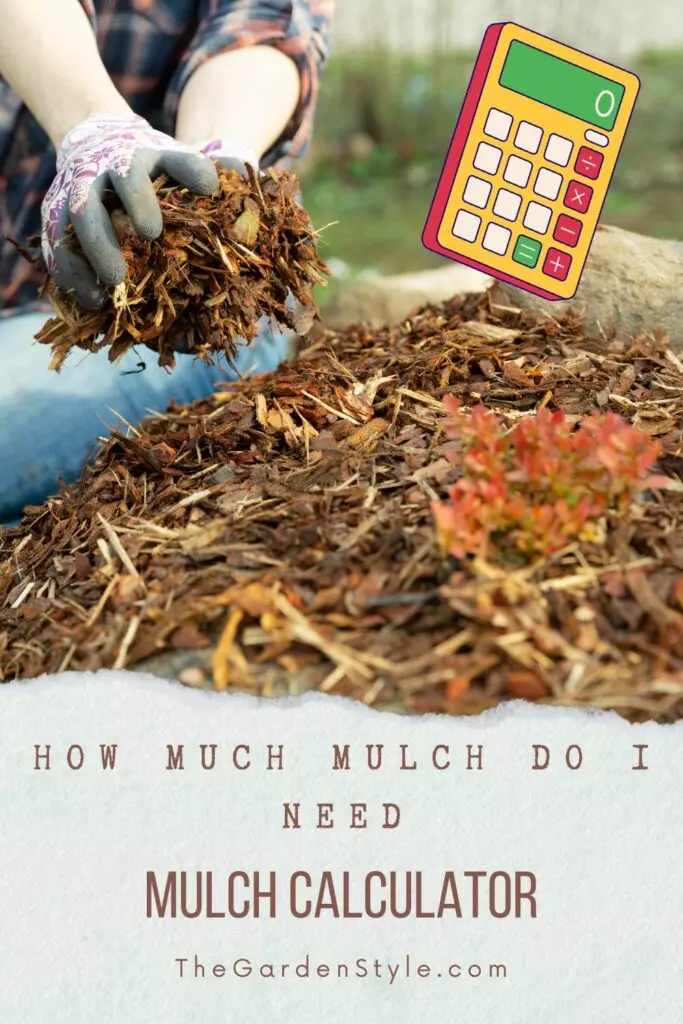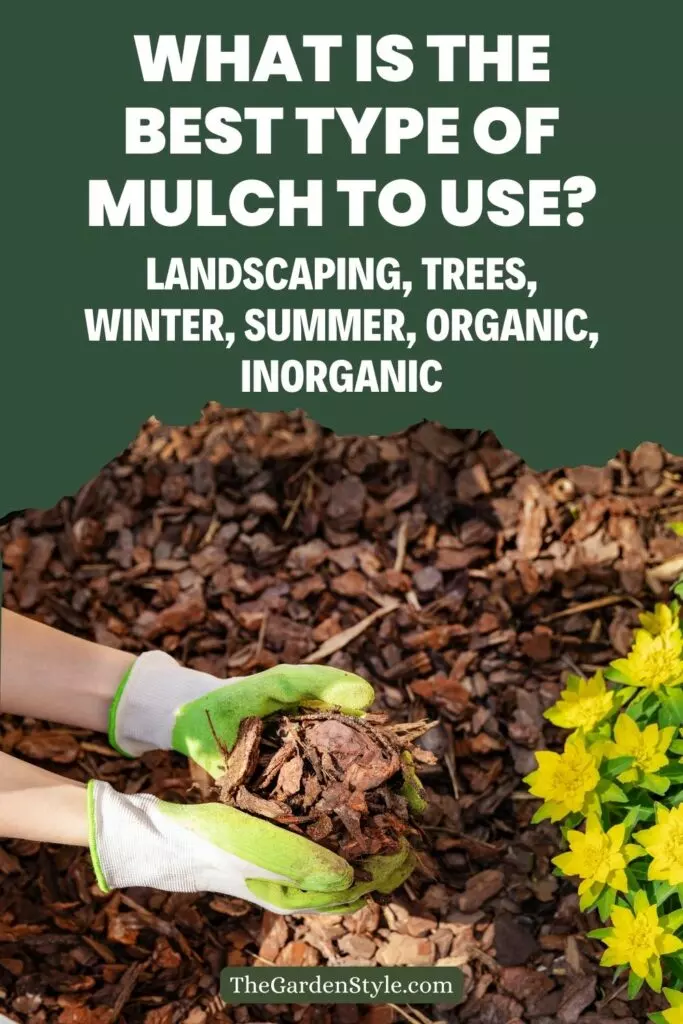As a landscape designer, I understand the importance of mulch in maintaining a healthy garden. Mulch is a layer of material that is spread over the soil to retain moisture, suppress weeds, and regulate soil temperature. However, there are many different types of mulch, and each of them has advantages and disadvantages and a different purpose. Also, you can select organic and inorganic options for your garden.
In this article, I will discuss the most common types of mulch used in gardening and landscaping. I will provide a detailed description of each type, including its pros and cons, to help you choose the right mulch for your garden. In addition, you will find a calculator to find out the amount of mulch you need for your garden.
Table of Contents
What Is Mulch?
Mulch is a material used to cover the soil around plants, trees, and shrubs. It has many benefits, including conserving moisture, reducing weed growth, regulating soil temperature, and preventing soil erosion. Mulch can also improve soil fertility as it decomposes over time.
There are different types of mulch available, each with its own advantages and disadvantages. Some common types of mulch include:
| Type of Mulches | Pros | Cons |
| Organic Mulch | – Breaks down over time, adding nutrients to the soil – Suppresses weed growth – Helps retain moisture – Regulates soil temperature | – Needs to be replenished regularly – Can attract pests and rodents – Can be expensive |
| Inorganic Mulch | – Lasts longer than organic mulch – Does not attract pests or rodents – Can be less expensive in the long run | – Does not improve soil fertility – Can raise soil temperature too much in hot weather – Can be difficult to remove |
Overall, the type of mulch you choose will depend on your specific needs and preferences. Consider factors such as cost, appearance, and the types of plants you are growing when selecting a mulch.
Different Types of Organic Mulch
There are several types of organic mulch made from natural materials that enrich and improve soil health over time. Popular organic options are wood chips, bark, straw, leaves, grass clippings, and pine straw, each offering unique benefits and drawbacks. When spread atop planting beds, organic mulches conserve moisture, discourage weeds, and protect plants during extreme temperatures.
Wood Chips
Wood chips are a popular choice for mulching because they are readily available and relatively inexpensive. They are made from various types of wood, including pine, cedar, and hardwood. Wood chips are an excellent choice for suppressing weeds and retaining moisture in the soil. They also provide a natural look to your garden.
Pros:
- Suppresses weeds
- Retains moisture in the soil
- Provides a natural look to your garden
Cons:
- It can attract termites and other pests
- It can take a long time to decompose
- It can cause nitrogen depletion in the soil
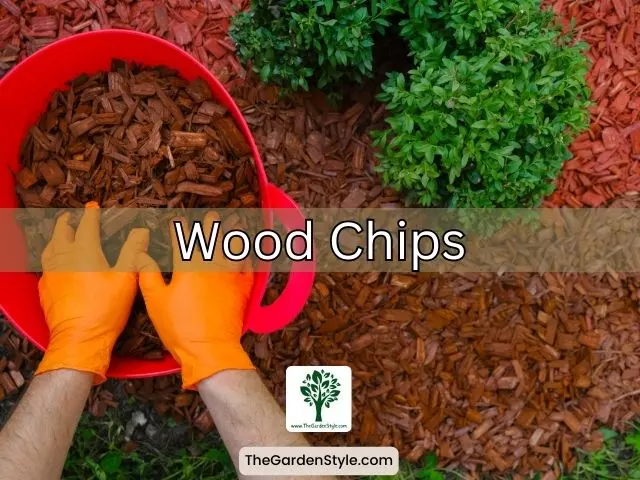
Bark Mulch
Bark mulch is made from the outer bark of trees, and it is a popular choice for mulching because it is long-lasting and attractive. It is available in different colors, including red, brown, and black. Bark mulch is an excellent choice for retaining moisture in the soil and suppressing weeds. Occasionally mushrooms may appear in the mulch, I recommend you read our article on how to get rid of mushrooms in mulch.
Pros:
- Long-lasting
- Attractive
- Retains moisture in the soil
- Suppresses weeds
Cons:
- It can be expensive
- It can attract termites and other pests
- It can cause nitrogen depletion in the soil
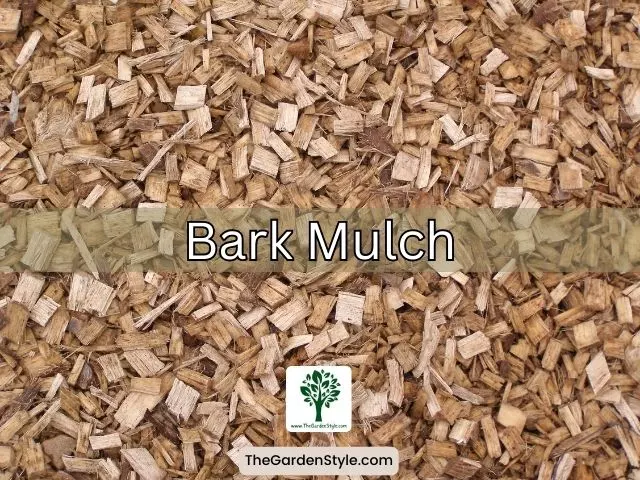
Grass Clippings
Grass clippings are an excellent choice for mulching because they are readily available and free. They are a good source of nitrogen, which is essential for plant growth. Grass clippings are an excellent choice for vegetable gardens and flower beds. Learn more about how to dispose of grass clippings.
Pros:
- Readily available and free
- Good source of nitrogen
- Suitable for vegetable gardens and flower beds
Cons:
- It can mat down and create a barrier to water and air
- It can attract pests
- It can introduce weed seeds to your garden
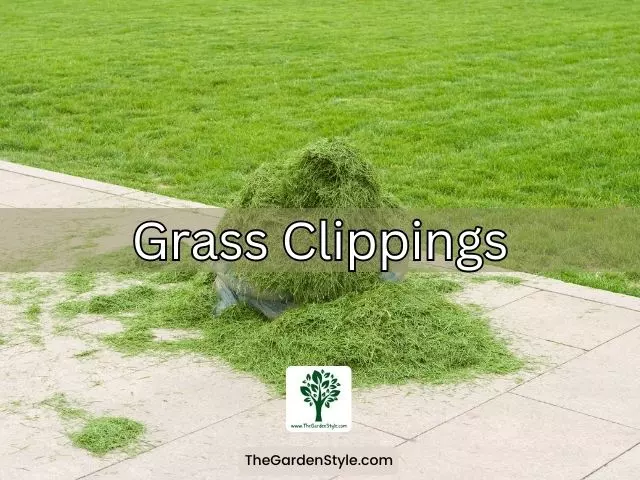
Straw/Hay
Straw and hay are popular choices for mulching because they are readily available and inexpensive. They are an excellent choice for vegetable gardens and flower beds. Straw and hay are also good sources of organic matter, which is essential for plant growth.
Pros:
- Readily available and inexpensive
- Suitable for vegetable gardens and flower beds
- Good source of organic matter
Cons:
- It can mat down and create a barrier to water and air
- It can introduce weed seeds to your garden
- It can attract pests
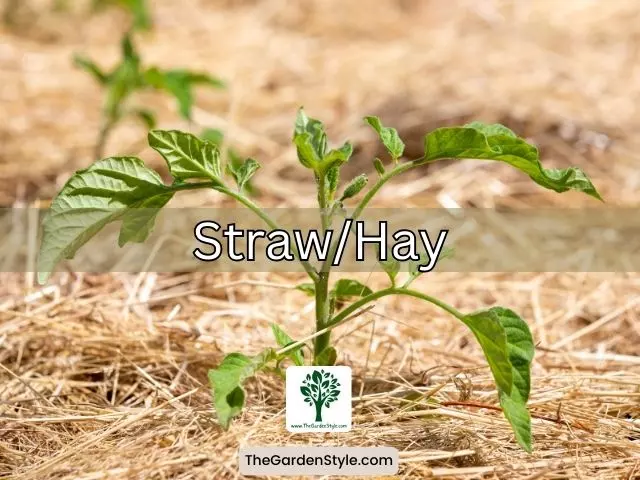
Pine Straw Mulch
Pine straw mulch is made from the needles of pine trees, and it is a popular choice for mulching because it is long-lasting and attractive. It is an excellent choice for retaining moisture in the soil and suppressing weeds. Pine straw mulch is also a good source of organic matter.
Pros:
- Long-lasting and attractive
- Retains moisture in the soil
- Suppresses weeds
- Good source of organic matter
Cons:
- It can be expensive
- It can attract termites and other pests
- It can cause nitrogen depletion in the soil
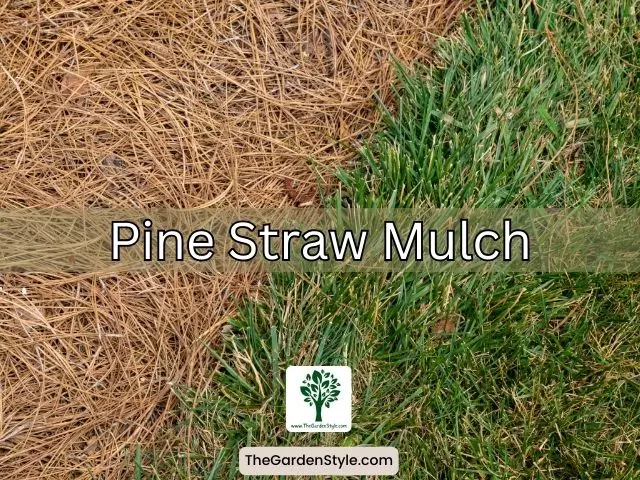
Comparative Table Between The Different Types Of Organic Mulch
Below is a table comparing the different kinds of organic mulch.
| Types of Organic Mulch | Pros | Cons |
| Wood Chips | Suppresses weeds Retains moisture in the soil Provides a natural look to your garden | Can attract termites and other pests Can take a long time to decompose Can cause nitrogen depletion in the soil |
| Bark Mulch | Long-lasting Attractive Retains moisture in the soil Suppresses weeds | Can be expensive Can attract termites and other pests Can cause nitrogen depletion in the soil |
| Grass Clippings | Readily available and free Good source of nitrogen Suitable for vegetable gardens and flower beds | Can mat down and create a barrier to water and air Can attract pests Can introduce weed seeds to your garden |
| Straw/Hay | Readily available and inexpensive Suitable for vegetable gardens and flower beds Good source of organic matter | Can mat down and create a barrier to water and air Can introduce weed seeds to your garden Can attract pests |
| Pine Straw Mulch | Long-lasting and attractive Retains moisture in the soil Suppresses weeds Good source of organic matter | Can be expensive Can attract termites and other pests Can cause nitrogen depletion in the soil |
Different Types of Inorganic Mulch
Inorganic mulch is a type of mulch that does not decompose or break down over time. It is typically made from materials such as gravel, pebbles, landscape fabric, or rubber. Inorganic mulch is a popular choice for homeowners who are looking for a low-maintenance option that does not require frequent replacement.
Gravel/Pebbles
Gravel and pebbles are commonly used as inorganic mulch. They come in a variety of sizes and colors, making it easy to find a style that complements your landscape. Gravel and pebbles are also effective ways to prevent soil erosion and retain moisture in the soil. However, they can be expensive and difficult to remove if you decide to change your landscaping in the future.
Pros:
- Comes in a variety of sizes and colors
- Effective at preventing soil erosion and retaining moisture
- Low-maintenance
Cons:
- Expensive
- Difficult to remove
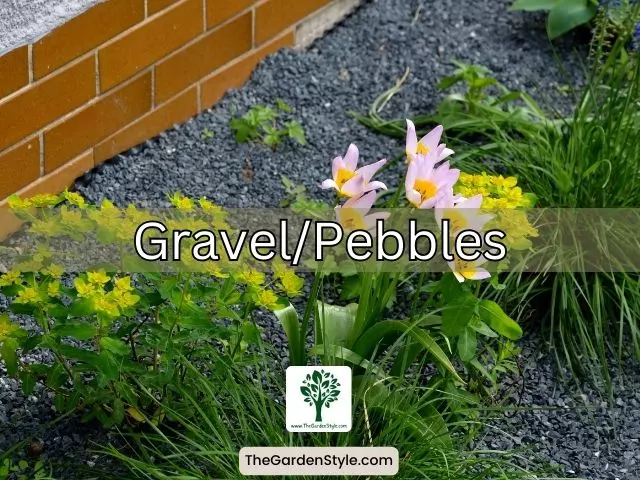
Landscape Fabric
Landscape fabric is a synthetic material that is designed to allow water and air to pass through while blocking weeds. It is typically made from polypropylene or polyester and is available in a range of thicknesses and grades. Landscape fabric is an excellent option for homeowners who want to minimize weeding and reduce the need for herbicides. However, it can be challenging to install and may require frequent replacement.
Pros:
- Blocks weeds
- Reduces the need for herbicides
- Allows water and air to pass through
Cons:
- Difficult to install
- May require frequent replacement
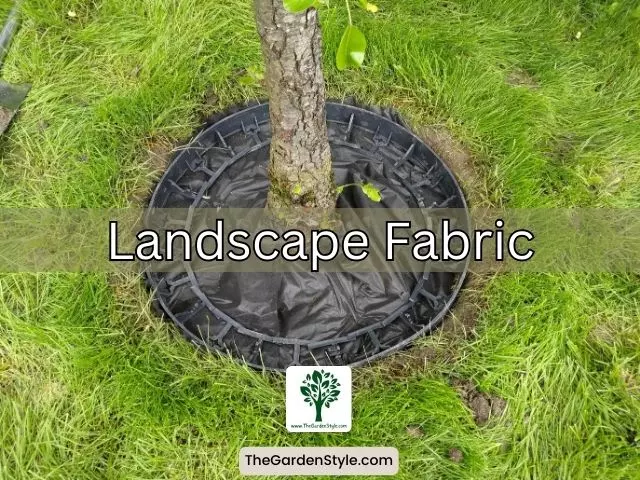
Rubber Mulch
Rubber mulch is made from recycled rubber and is a popular choice for playgrounds and other high-traffic areas. It is available in a range of colors and is designed to mimic the look of natural wood mulch. Rubber mulch is a great option for homeowners who want a long-lasting, low-maintenance option. However, it can be expensive and may not be suitable for all types of landscaping.
Pros:
- Long-lasting
- Low-maintenance
- Mimics the look of natural wood mulch
Cons:
- Expensive
- May not be suitable for all types of landscaping
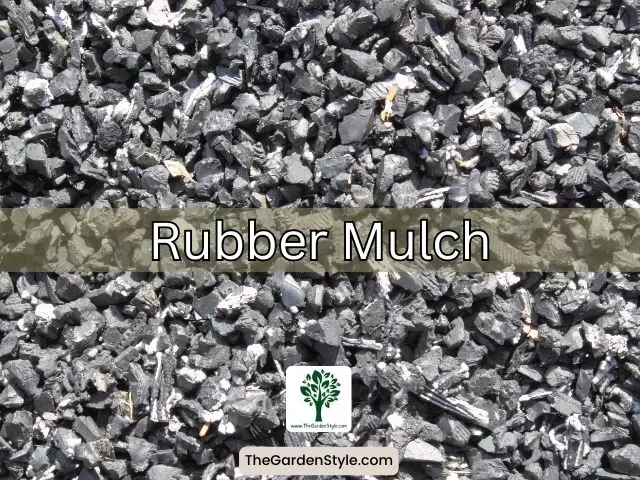
Comparative Table Between The Different Types of Inorganic Mulch
Below is a table comparing the different kinds of inorganic mulch.
| Types of Inorganic Mulch | Pros | Cons |
| Gravel/Pebbles | Comes in a variety of sizes and colors Effective at preventing soil erosion and retaining moisture Low-maintenance | Expensive Difficult to remove |
| Landscape Fabric | Blocks weeds Reduces the need for herbicides Allows water and air to pass through | Difficult to install May require frequent replacement |
| Rubber Mulch | Long-lasting Low-maintenance Mimics the look of natural wood mulch | Expensive May not be suitable for all types of landscaping |
What Is The Main Difference Between Mulch For Landscaping And Mulch For Trees?
While the fundamental purpose of mulch—whether for landscaping or around trees—is to provide various benefits to plants and soil, there might be some differences in the types of mulch used and the specific considerations for each application.
Mulch for Landscaping:
- Aesthetic Considerations: Landscaping mulch often serves aesthetic purposes, enhancing the overall appearance of garden beds and outdoor spaces.
- Plant Variety: Landscaping mulch is used in a variety of settings, including flower beds, around shrubs, and in garden areas with a mix of plants.
- Mulch Types: Different types of mulch, such as bark mulch, wood chips, or decorative stone, are commonly used for landscaping purposes.
- Moisture Retention: Landscaping mulch helps retain soil moisture, suppress weed growth, and regulate soil temperature.
Mulch for Trees:
- Tree Health: Mulching around trees is often more focused on promoting the health of individual trees. It helps conserve soil moisture, regulate temperature, and protect tree roots.
- Avoiding Volcano Mulching: Special attention is given to the proper mulching technique around trees to prevent issues like “volcano mulching,” where mulch is piled against the tree trunk, leading to potential problems.
- Type of Mulch: Organic mulches, such as shredded bark or wood chips, are commonly used around trees. These materials gradually break down, contributing organic matter to the soil.
- Mulch Depth: Mulch around trees is typically applied in a donut-shaped ring, leaving a gap around the base of the tree to prevent moisture-related issues and trunk diseases.
What Is The Best Type Of Mulch To Use
The best type of mulch depends on various factors, including your specific gardening goals, local climate, the types of plants you’re growing, and aesthetic considerations. Here are some general recommendations for different scenarios:
1. Mulch for Summer:
Organic Mulches (Straw, Bark, Wood Chips): These mulches help retain soil moisture, suppress weeds, and regulate soil temperature during hot summer months. Organic mulches gradually break down, contributing organic matter to the soil.
2. Mulch for Winter:
Straw or Hay, Wood Chips, Bark Mulch: These materials provide insulation during winter, protecting plants from temperature fluctuations and frost. They also help retain moisture. Learn more about how to protect plants from frost.
3. Mulch for Garden Beds:
Compost, Shredded Leaves, Straw: Organic mulches are excellent for garden beds as they improve soil structure, retain moisture, and add nutrients as they break down.
4. Mulch for Landscaping:
Wood Chips, Bark Mulch, Decorative Stone: Wood-based mulches are popular for landscaping due to their aesthetic appeal. They help regulate soil temperature, retain moisture, and suppress weeds.
5. Mulch for Trees:
Wood Chips, Bark Mulch, Shredded Leaves: Organic mulches are beneficial for trees as they improve soil conditions, retain moisture, and protect the tree roots. Ensure the mulch is applied in a ring around the tree, leaving space around the trunk to prevent issues like “volcano mulching.”
How Much Mulch Do I Need: Much Calculator
Figuring out how much mulch to purchase and spread in your garden can be tricky. To take the guesswork out of mulching, I’ve created, with my husband, Henry, this handy mulch calculator for you to use.
Let’s see how to use our mulch calculator. Simply input the length, width, and depth needed for your planting beds or garden below. Then, you’ll instantly know exactly how many cubic yards or bags of mulch to get for your unique garden size and shape.
Mulch Calculator
Recommended depth: 3 inches
- MIGHTY109 Espresso Brown Wood Chip Mulch
- Beautiful brown colored wood chips add a great finishing touch to any landscape.
- Great for use around flowers, plants, flower beds, gardens, landscapes and more.
If this post about different types of mulch was helpful, please share it:
